Experimental Technologies
Several brand new or next-generation technologies will be riding on the rocket to Mars. Two of these are officially designated technology demonstrations — experiments that seek to prove a first-of-their-kind capability, with limited scope. Previous examples of these groundbreaking experimental technologies are the Mars Pathfinder mission and its rover (Sojourner), the Mars Cube One (MarCO) CubeSats that flew by Mars, and the NASA-sponsored rocket planes and lifting body vehicles that paved the way for the space shuttle. The success of these technology demonstrations is not connected to the overall success of the Perseverance rover and the Mars 2020 mission.
MOXIE (Mars Oxygen ISRU Experiment)
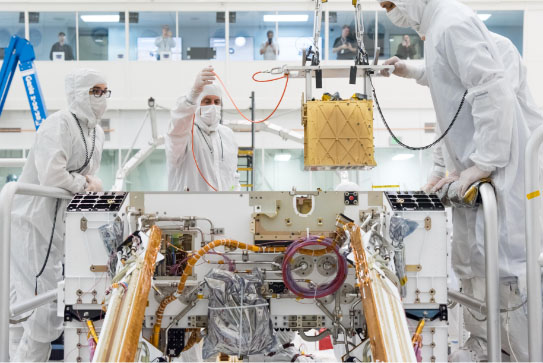 Image credit: NASA/JPL-Caltech | Full image and caption
Image credit: NASA/JPL-Caltech | Full image and caption
Located inside the body of the Perseverance rover, MOXIE will test technology that converts carbon dioxide in the Martian atmosphere into oxygen. The “I” in MOXIE stands for “in situ resource utilization,” or ISRU — the concept of using resources found where a spacecraft lands rather than bringing those resources from Earth.
MOXIE also serves as one of Perseverance’s payload instruments; more information is available in the Payload Instruments section of this press kit.
Ingenuity Mars Helicopter
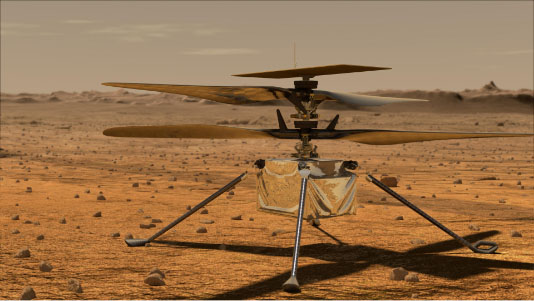 Image credit: NASA/JPL-Caltech | Full image and caption
Image credit: NASA/JPL-Caltech | Full image and caption
Weighing just about 4.0 pounds (1.8 kilograms), the Ingenuity Mars Helicopter is a small, autonomous rotorcraft designed to test — for the first time — powered flight in the thin Martian atmosphere. This lightweight helicopter does not carry any science instruments.
Ingenuity’s performance during its experimental test flights will help NASA make decisions about small helicopters for future Mars missions, where they could perform in a support role as robotic scouts, surveying terrain from above, or as full standalone science craft carrying instrument payloads. Taking to the air would give scientists a new perspective of a region’s geology and allow them to peer into areas too steep or slippery to send a rover. In the distant future, they might even help astronauts explore Mars.
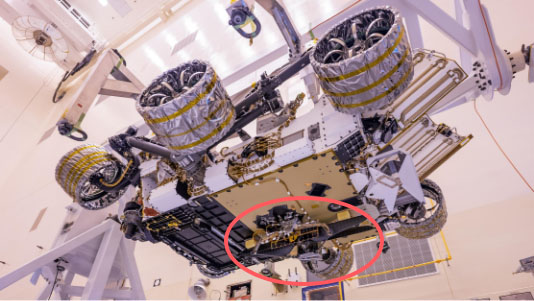 The Mars Helicopter Delivery System holds the Ingenuity Mars Helicopter to the underside of Perseverance. Image credit: NASA/JPL-Caltech | Full image and caption
The Mars Helicopter Delivery System holds the Ingenuity Mars Helicopter to the underside of Perseverance. Image credit: NASA/JPL-Caltech | Full image and caption
The Mars Helicopter Delivery System — designed collaboratively by Lockheed Martin Space and JPL’s Mars 2020 and helicopter teams — attaches the helicopter to the belly of the rover for their journey to the Red Planet. This system protects Ingenuity from debris during landing and will deploy the helicopter onto the Martian surface roughly two-and-a-half months later.
Key Objectives
Demonstrate powered flight in the thin atmosphere of Mars.
- The Red Planet has lower gravity (about one-third that of Earth) but its atmosphere is only 1% as thick, making it much harder to generate lift.
- The first test flight is expected to take place in the spring of 2021 after about six sols of activities to check out the helicopter.
- The helicopter could fly as high as 15 feet (5 meters) in altitude and as far as 160 feet (50 meters) downrange.
- The longest that engineers will try to fly the helicopter on each flight will be 90 seconds.
Demonstrate miniaturized flying technology on another planet.
- To fly in the thin atmosphere, Ingenuity was limited to a total mass of about 4.0 pounds (1.8 kilograms).
- The rotor system, solar panel, landing gear, fuselage and other components must be very lightweight.
- To fit in a fuselage just 0.45 feet by 0.54 feet by 0.64 feet (14 centimeters by 16 centimeters by 20 centimeters), onboard computers, batteries, sensors, heaters and telecommunications hardware also need to be very small.
- These components also had to be stress-tested to be sure they could survive the cold temperatures and radiation in deep space and on Mars.
Operate autonomously.
- Like the rover, the helicopter is too far from Earth to be operated with a joystick. So engineers will have to learn how to operate an aerial vehicle very remotely.
- The helicopter is designed to fly, land, communicate, manage its energy and keep warm autonomously.
- Innovative mathematical algorithms will optimize flight efficiency and survival.
Milestones
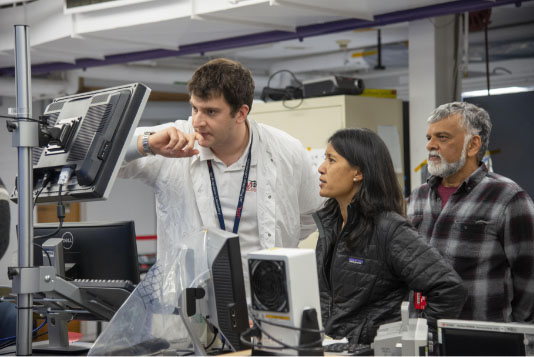 Image credit: NASA/JPL-Caltech | Full image and caption
Image credit: NASA/JPL-Caltech | Full image and caption
Given the high-risk, high-reward nature of Ingenuity’s mission, the team has many milestones that they need to hit on the road to success:
- Surviving launch, the cruise to Mars and landing on the Red Planet.
- Deploying safely to the Martian surface from the belly pan of the Perseverance rover and unfolding from its stowed position correctly.
- Autonomously keeping warm through the intensely cold Martian nights (as frigid as minus 130 degrees Fahrenheit, or minus 90 degrees Celsius).
- Autonomously charging with its solar panel.
- Confirming communications with the rover and flight operators on Earth.
- Spinning up its rotor blades for the first time (to a speed below what would be needed for flight).
- Lifting off for the first time in the thin Martian atmosphere.
- Flying autonomously.
- Landing successfully.
If all those steps are successful, Ingenuity will attempt up to four additional test flights. All test flights will take place within a 30-Martian-day (31-Earth-day) window of activities allowed for the helicopter, after which point the Perseverance rover will need to move on for its science operations.
Key Features
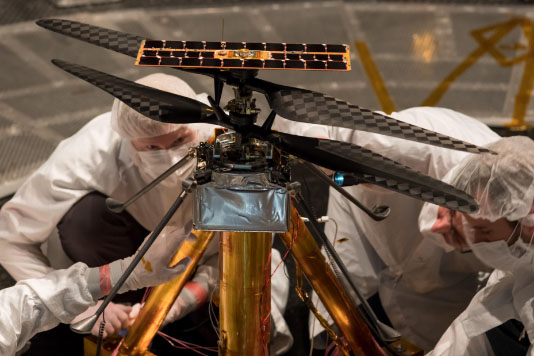 Image credit: NASA/JPL-Caltech | Full image and caption
Image credit: NASA/JPL-Caltech | Full image and caption
What makes the helicopter a special piece of technology?
Ingenuity:
- Weighs about 4.0 pounds (1.8 kilograms).
- Is solar-powered and recharges on its own.
- Communicates wirelessly with Perseverance by remaining within a 0.6-mile (1- kilometer) radius of the rover. The rover then communicates with relay orbiters that send the signal back to Earth.
- Has a rotor system made of four carbon-fiber blades arranged into two 4-foot (1.2-meter) counter-rotating rotors, spinning at about 2,400 rpm. This first-of-its-kind rotor system was created in partnership with AeroVironment, Inc., of Simi Valley, California.
- Is equipped with computers, navigation sensors and two cameras (one color and one black-and-white).
More information can be found at the Ingenuity Mars Helicopter website.
More on Spacecraft
-
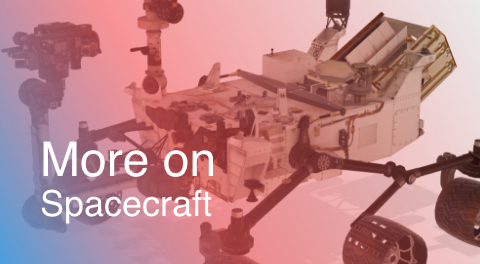
Perseverance Rover
Learn more about this part of the spacecraft
-
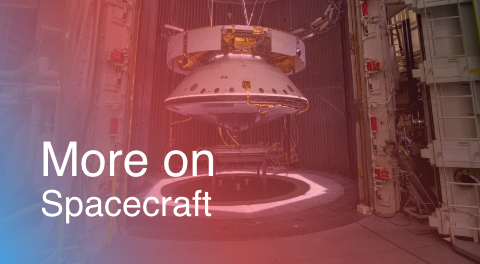
Getting to Mars
Learn more about this part of the spacecraft
-
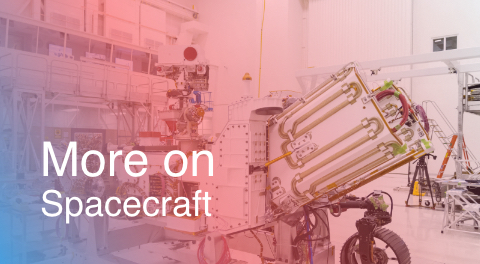
Power
Learn more about this part of the spacecraft
-
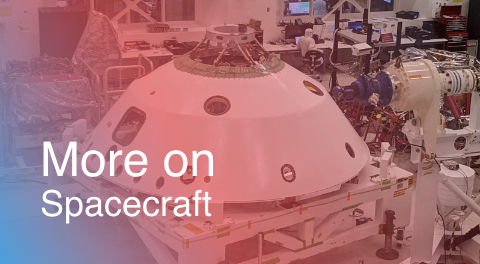
Telecommunications
Learn more about this part of the spacecraft
-
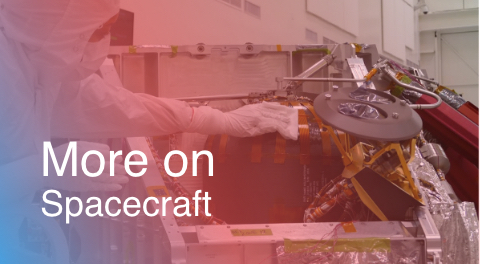
Biological Cleanliness
Learn more about this part of the mission
-
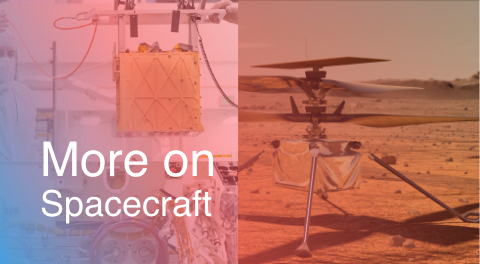
Experimental Technologies
Learn more about these technologies



